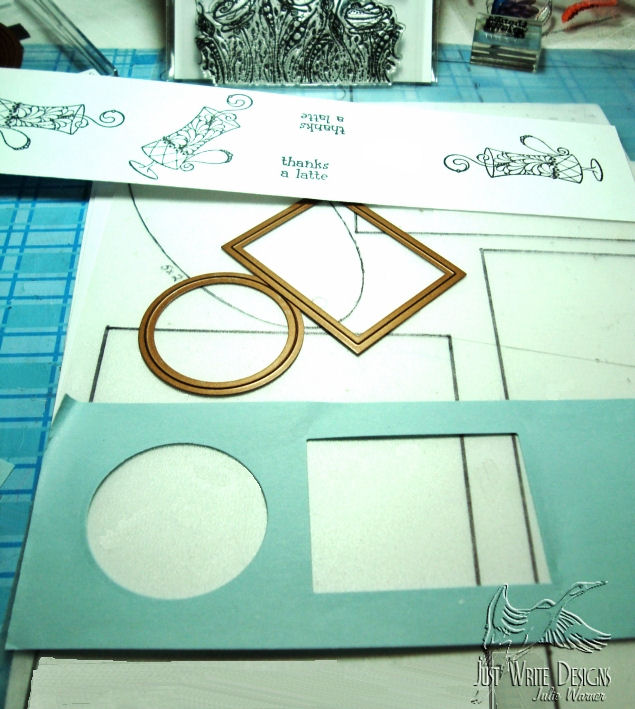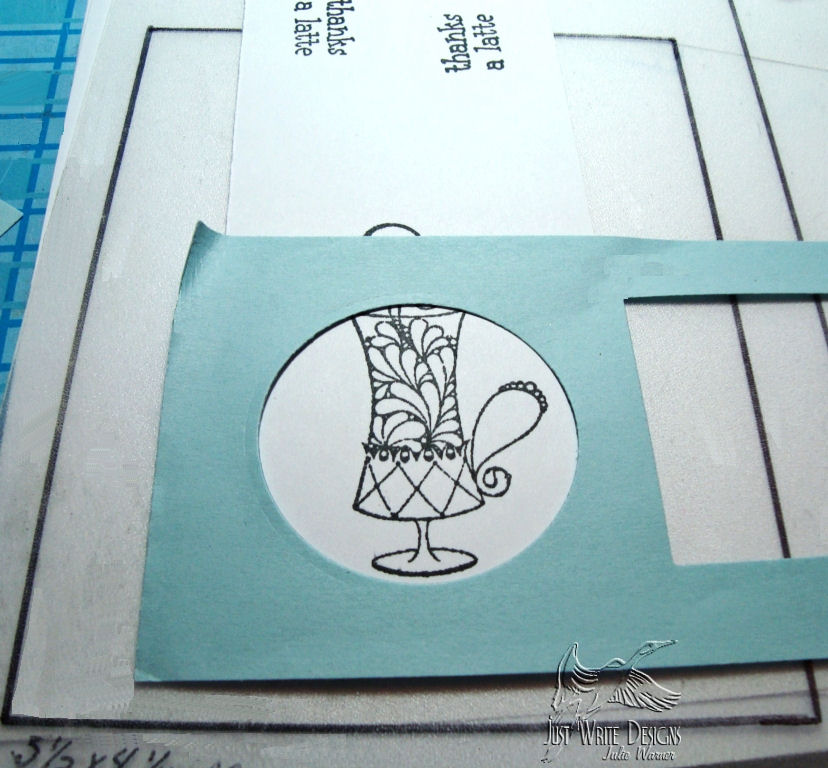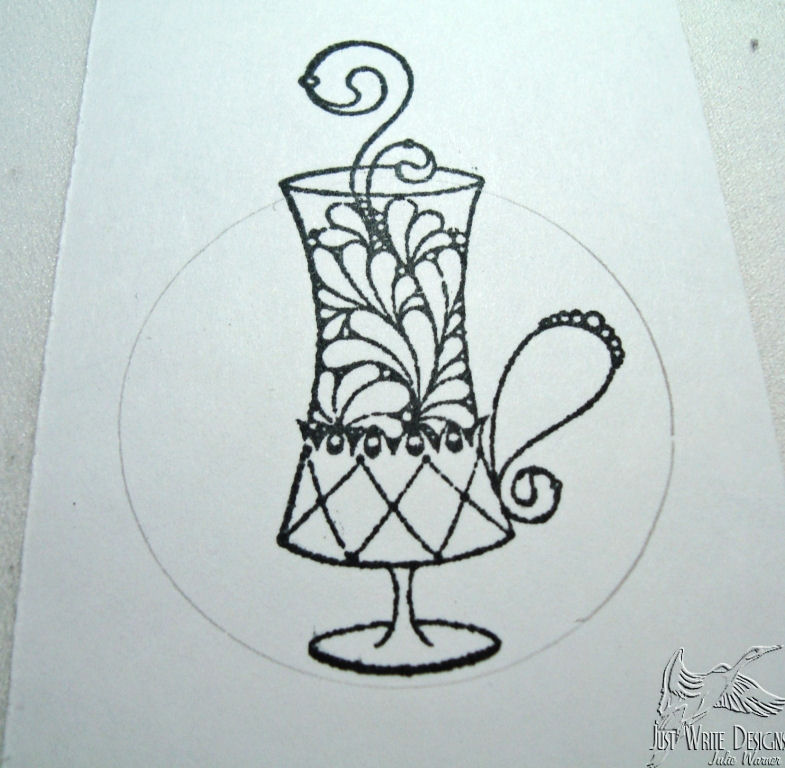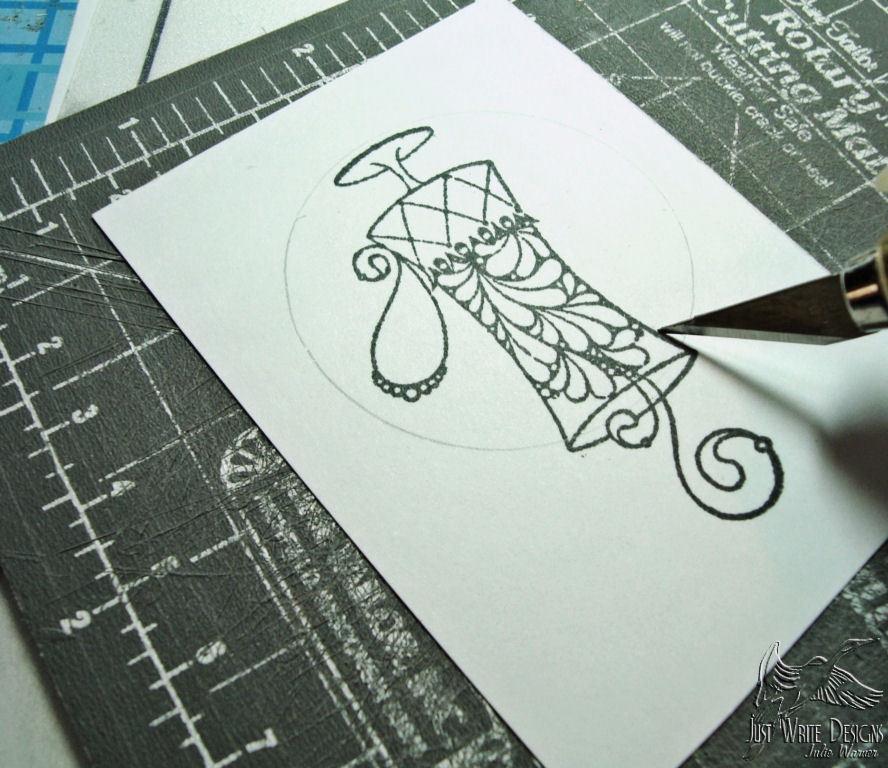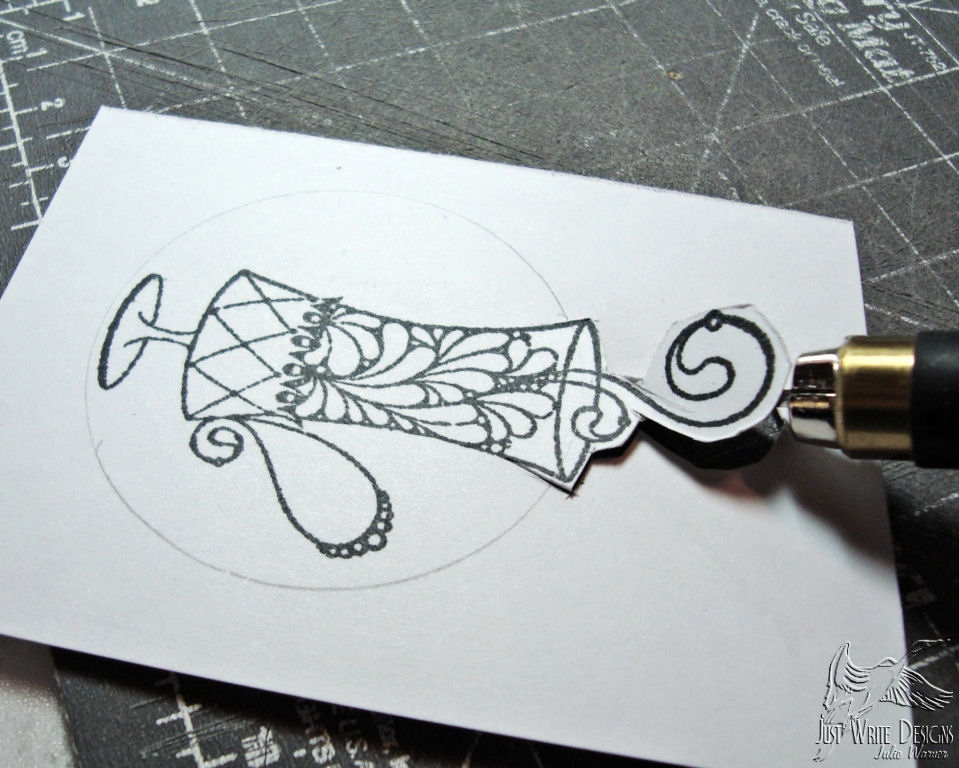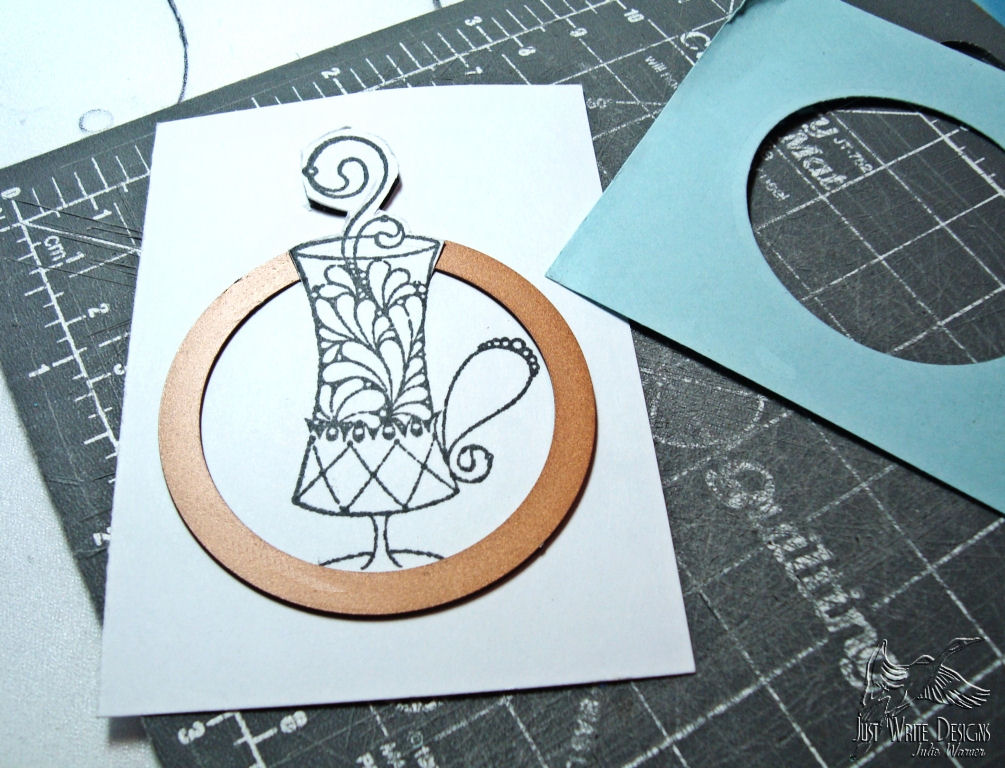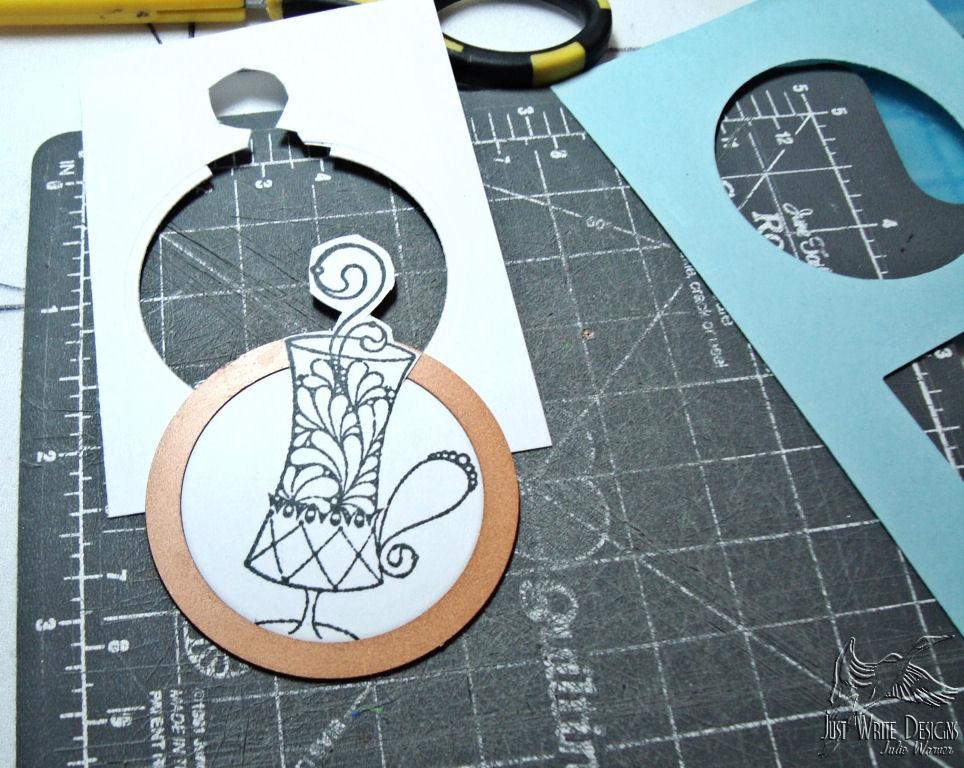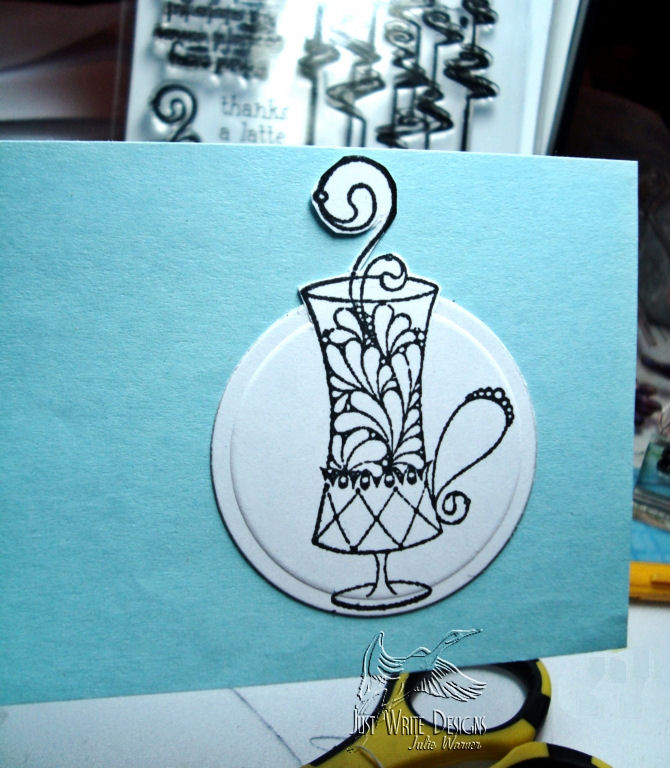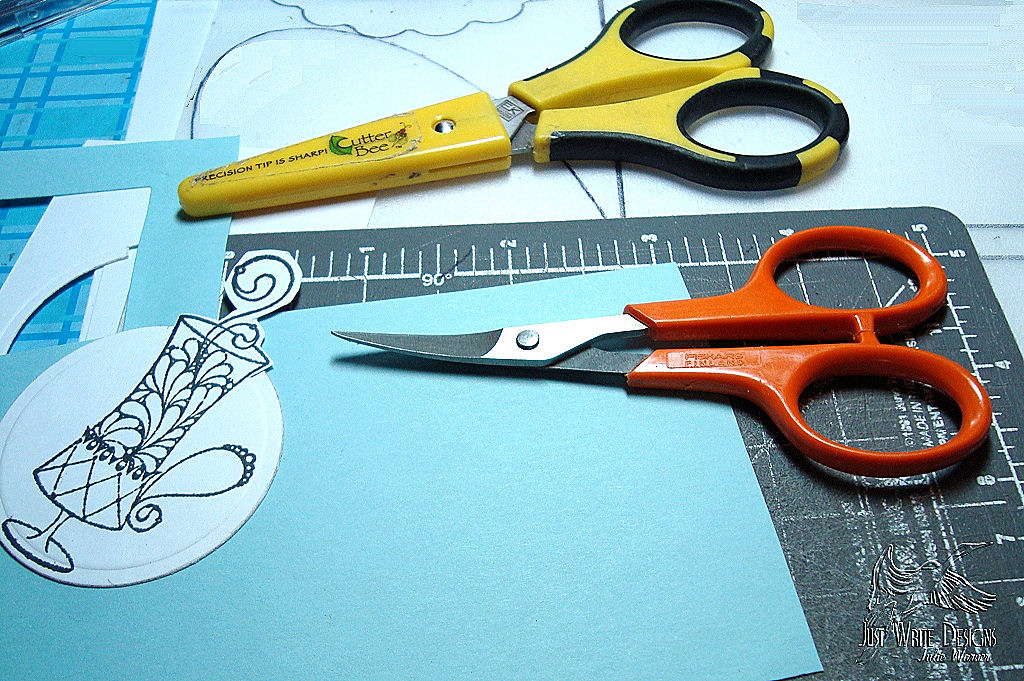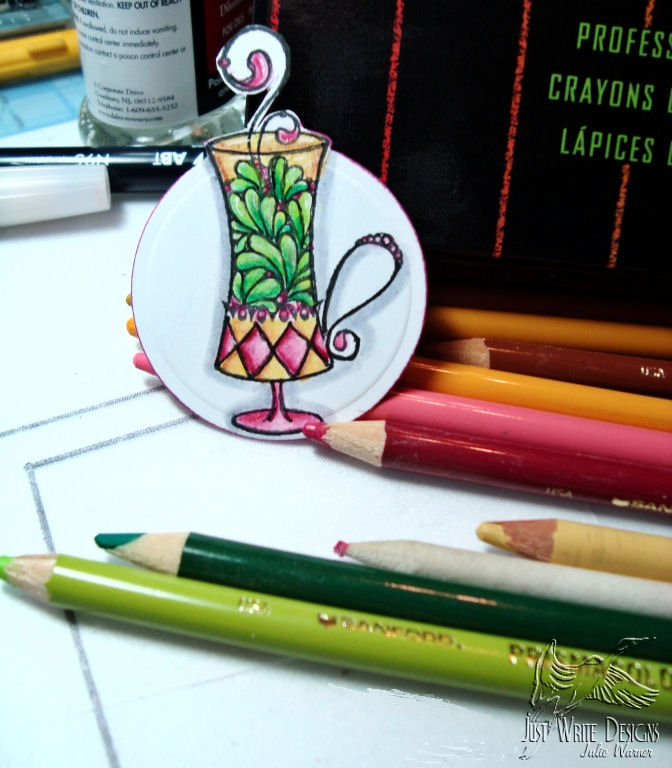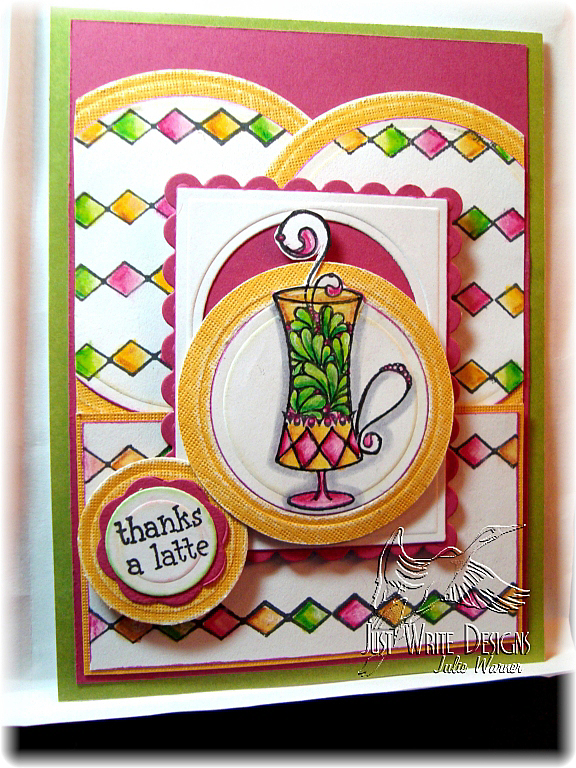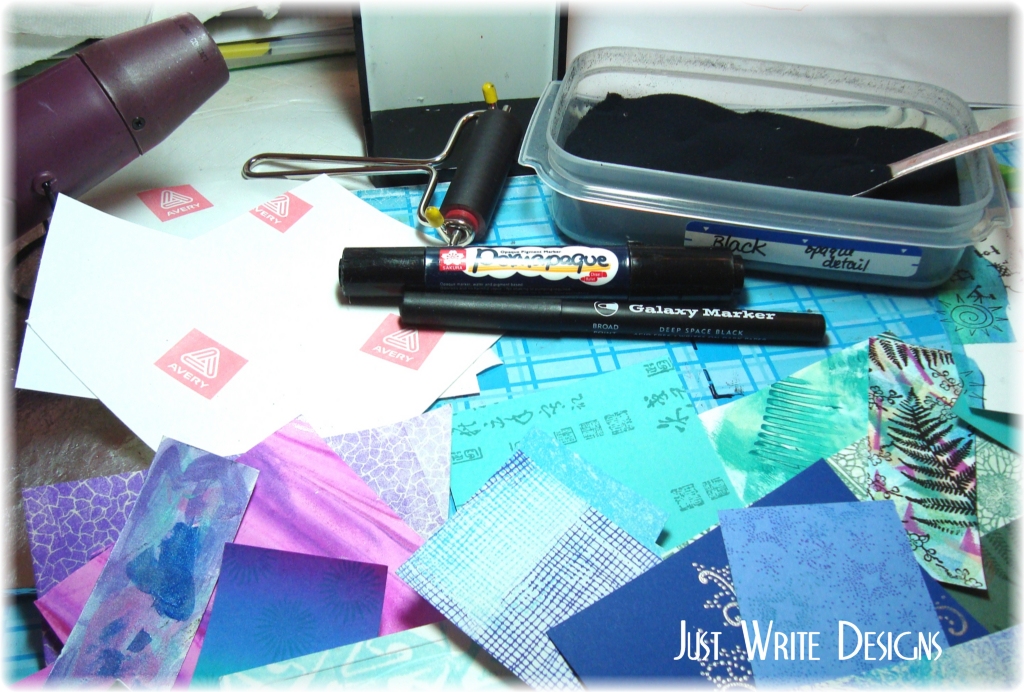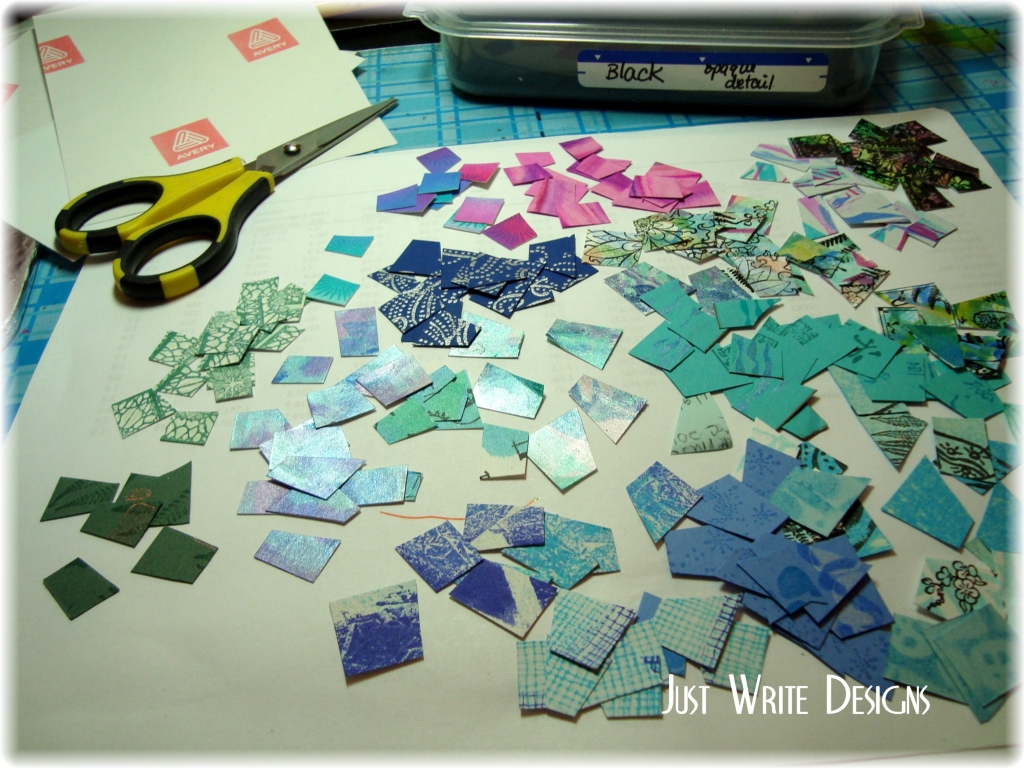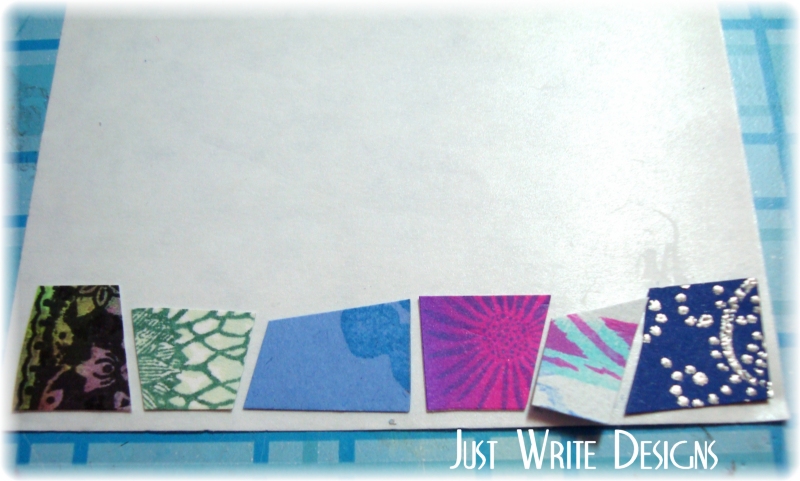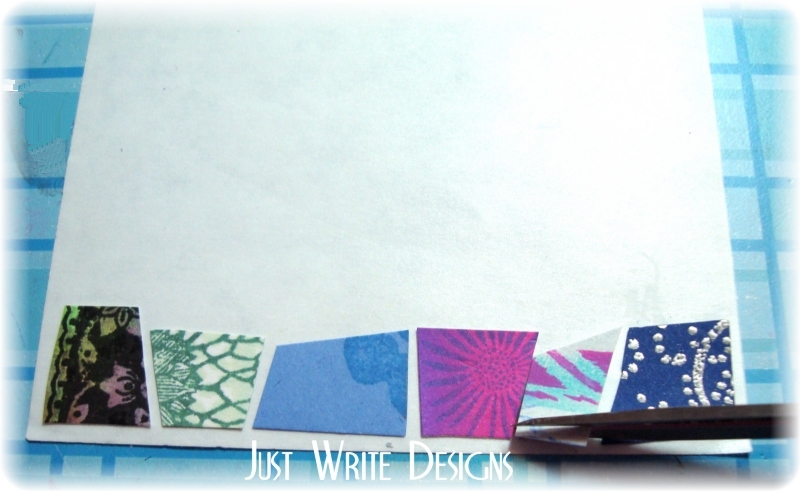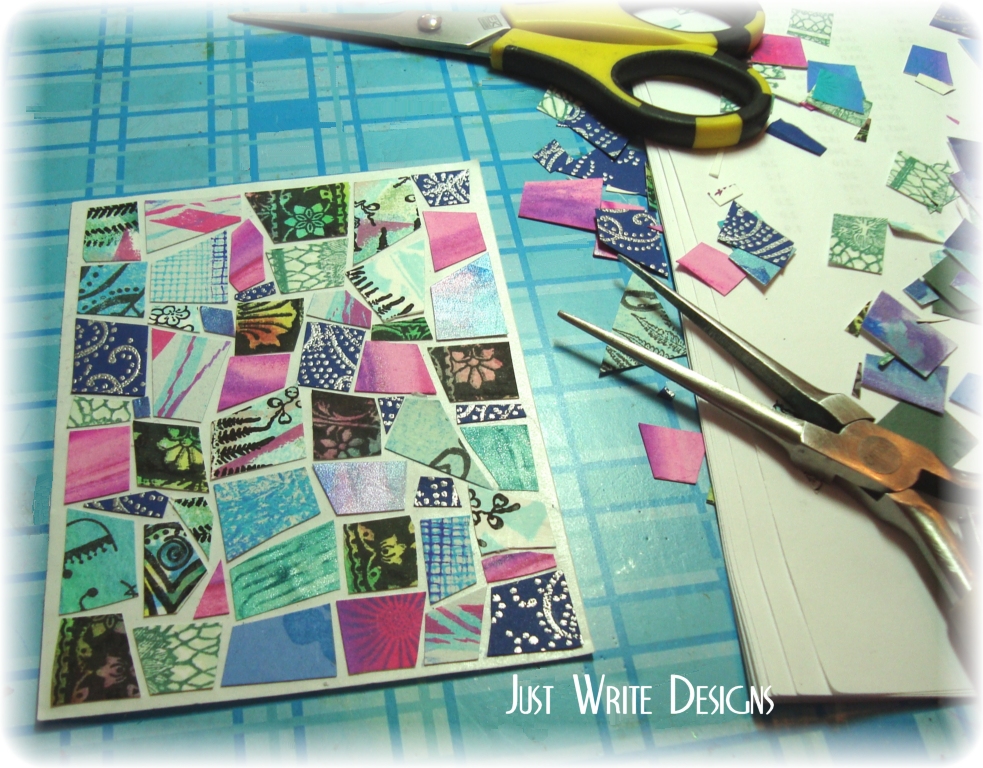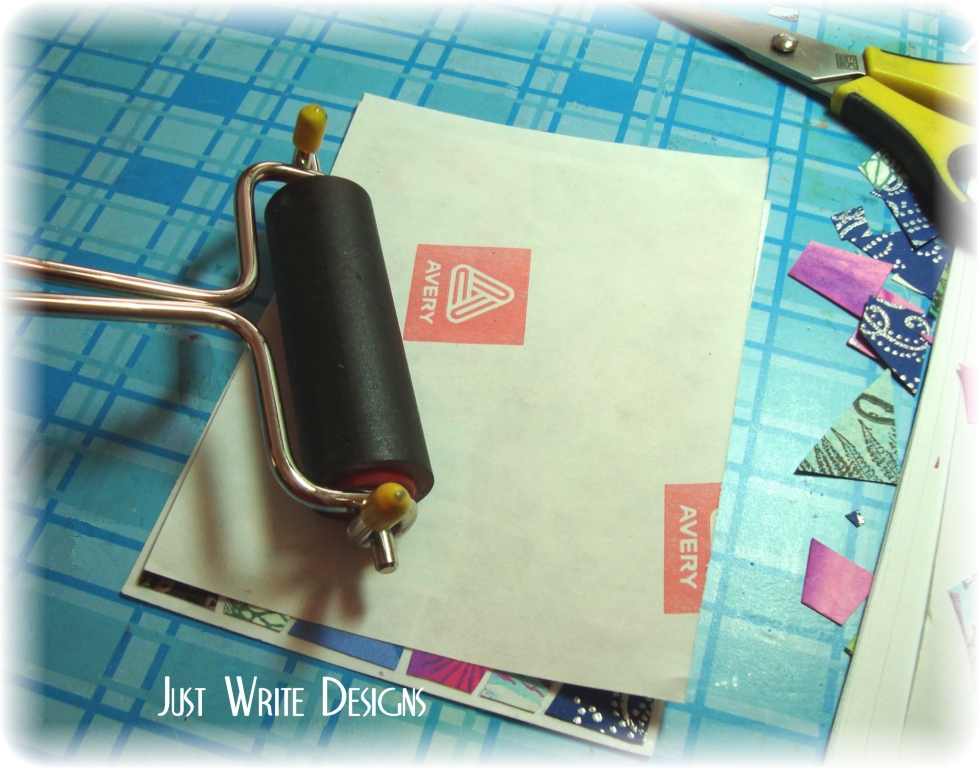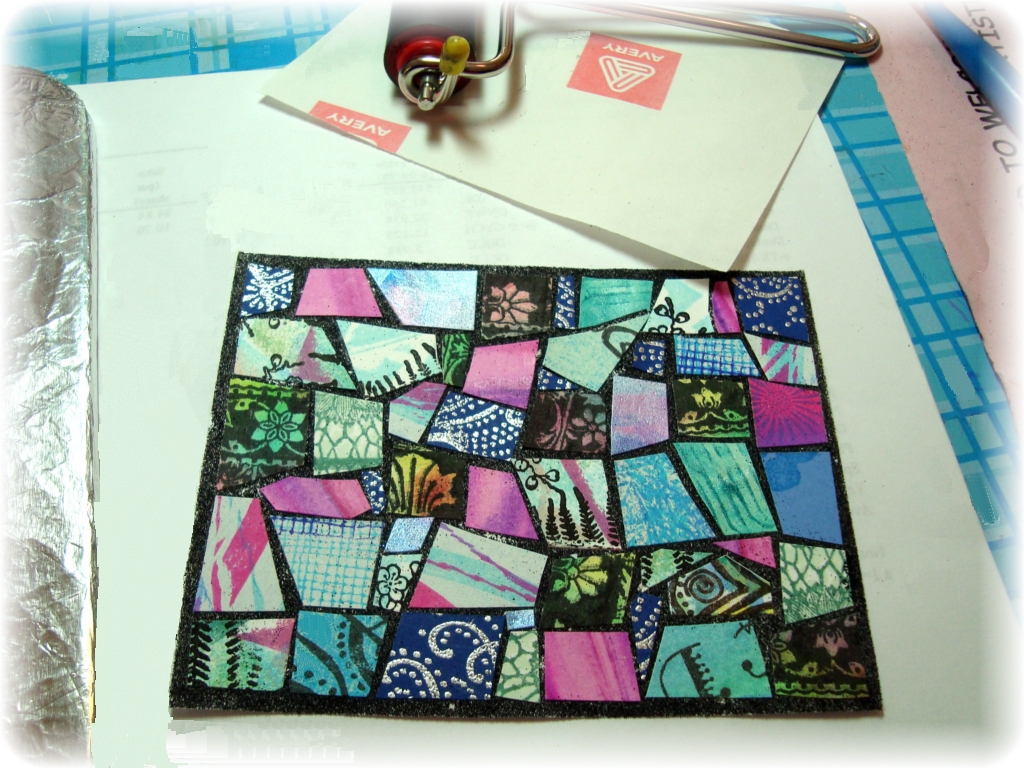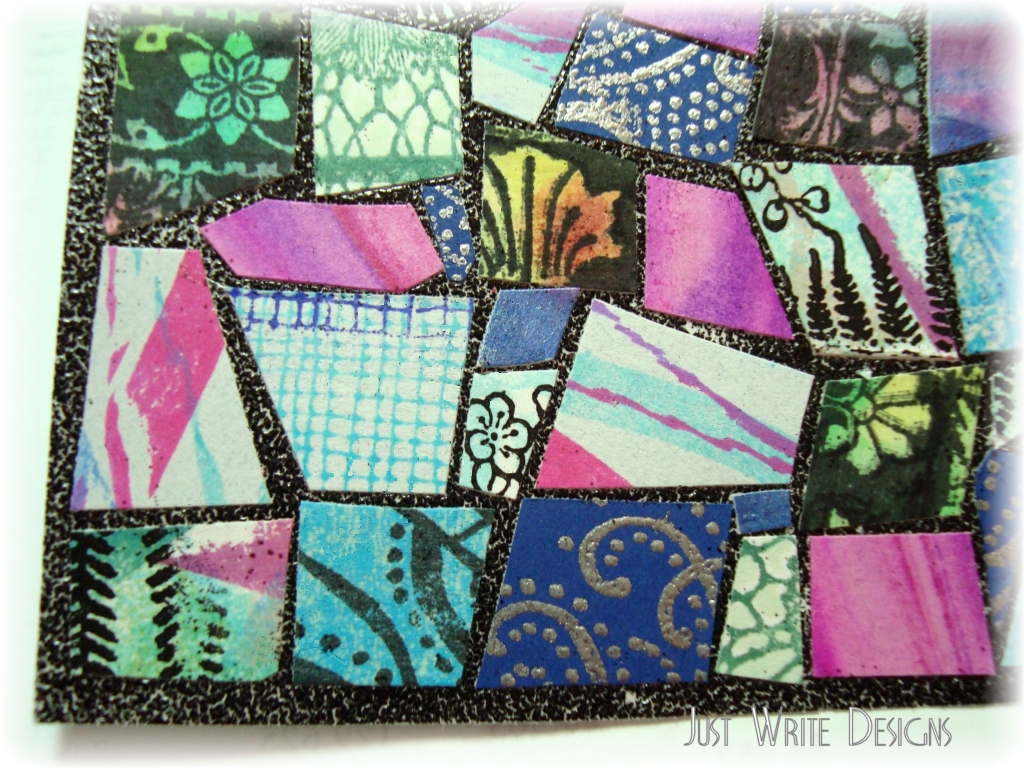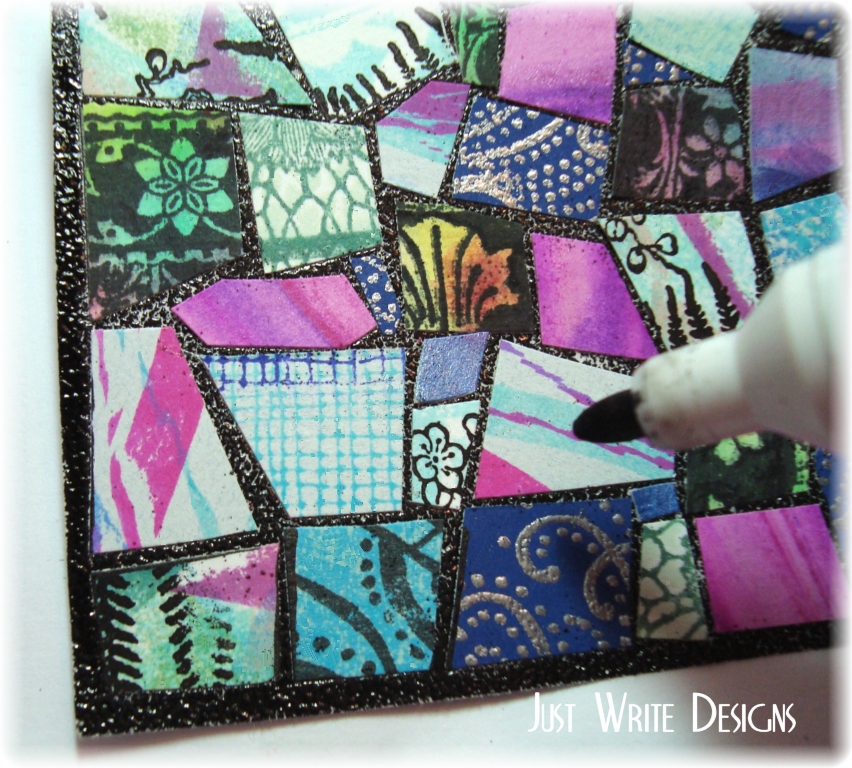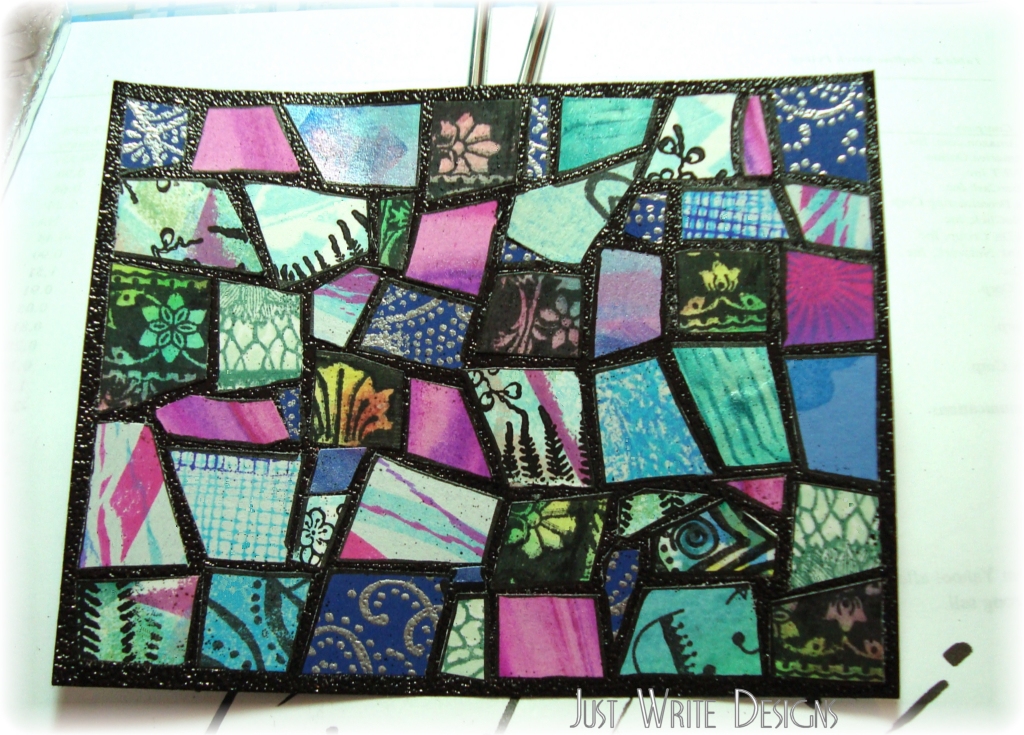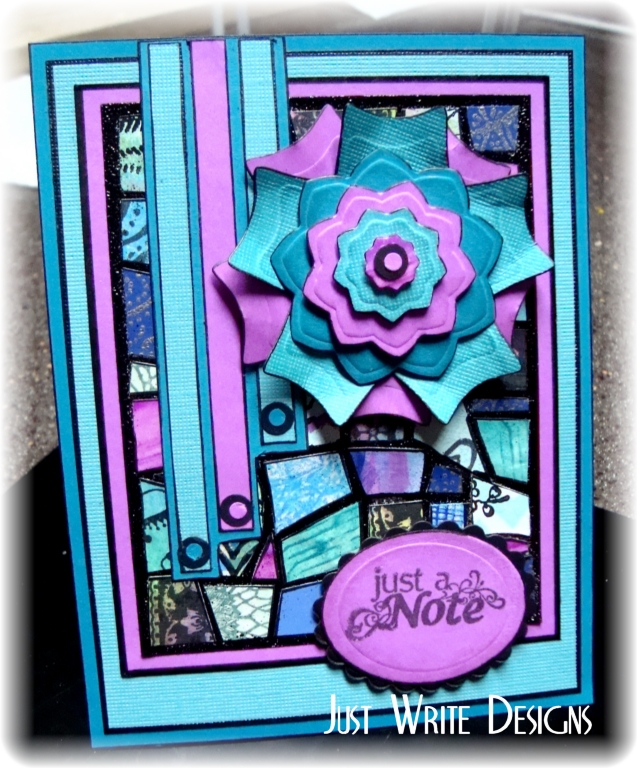I frequently make faux brads for my cards. Apart from liking the way they look, I find they go through the mail easier, don’t add a lot of weight and I don’t have the prongs to worry about. I hate it when they stick out or won’t allow the layers to lay flat. They can also be made to match by using the same card stock or designers paper used for the project. Usually I stick to 1/4″ but really, the size is only dependent upon the size of hole or circle punch you use.
In my quest to find an easy, consistent way to achieve the distinct rounded shape of a brad, I came up with a little brad jig. I’ve tried a lot of different objects, but this seems to work the best. I made this new one for the tutorial as my old one was made from a cereal box and had a lot of colors and words on it. After I finished this, I went back and added some other sizes using my Japanese screw punch.
Before I show you how to make the faux brad, I need to show you how to make the Faux Brad Jig. It’s made from a piece of card board from a box. This is how it looks. (Click on any picture to enlarge)
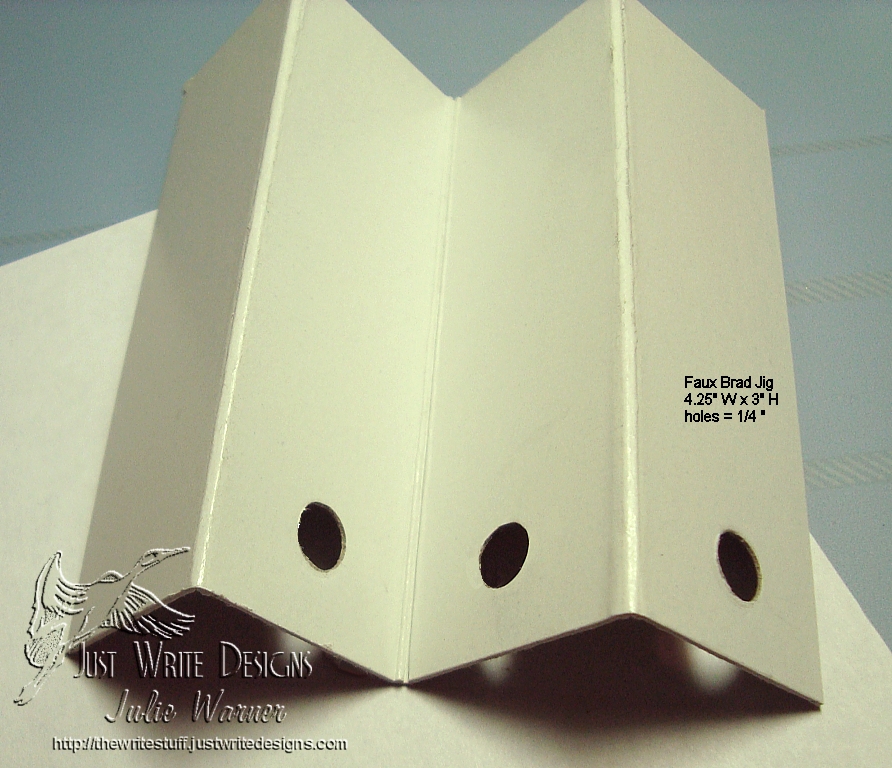
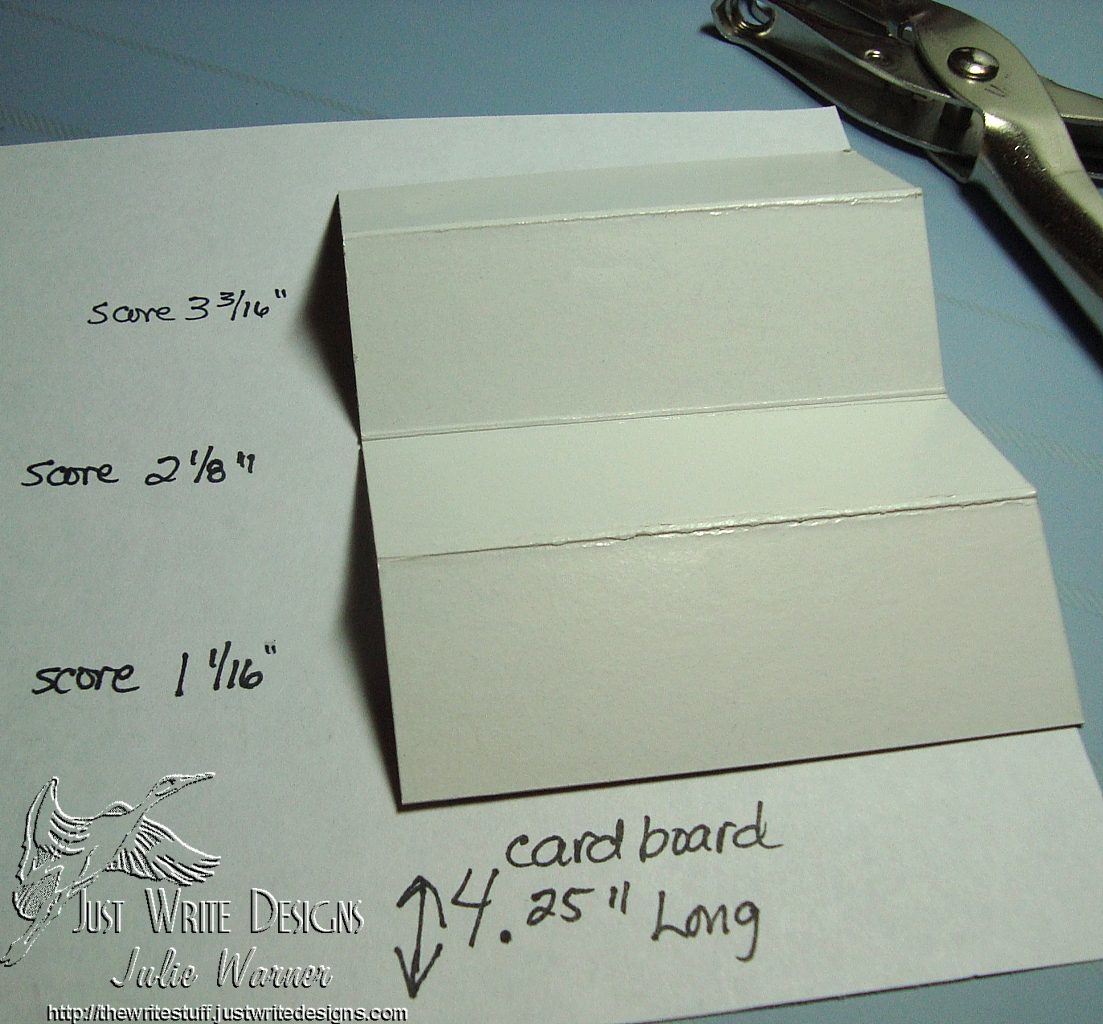
Step 1: Cut a piece of card board and score where directed. I made my piece a little wider than I need for this, but I added more sizes next to it.
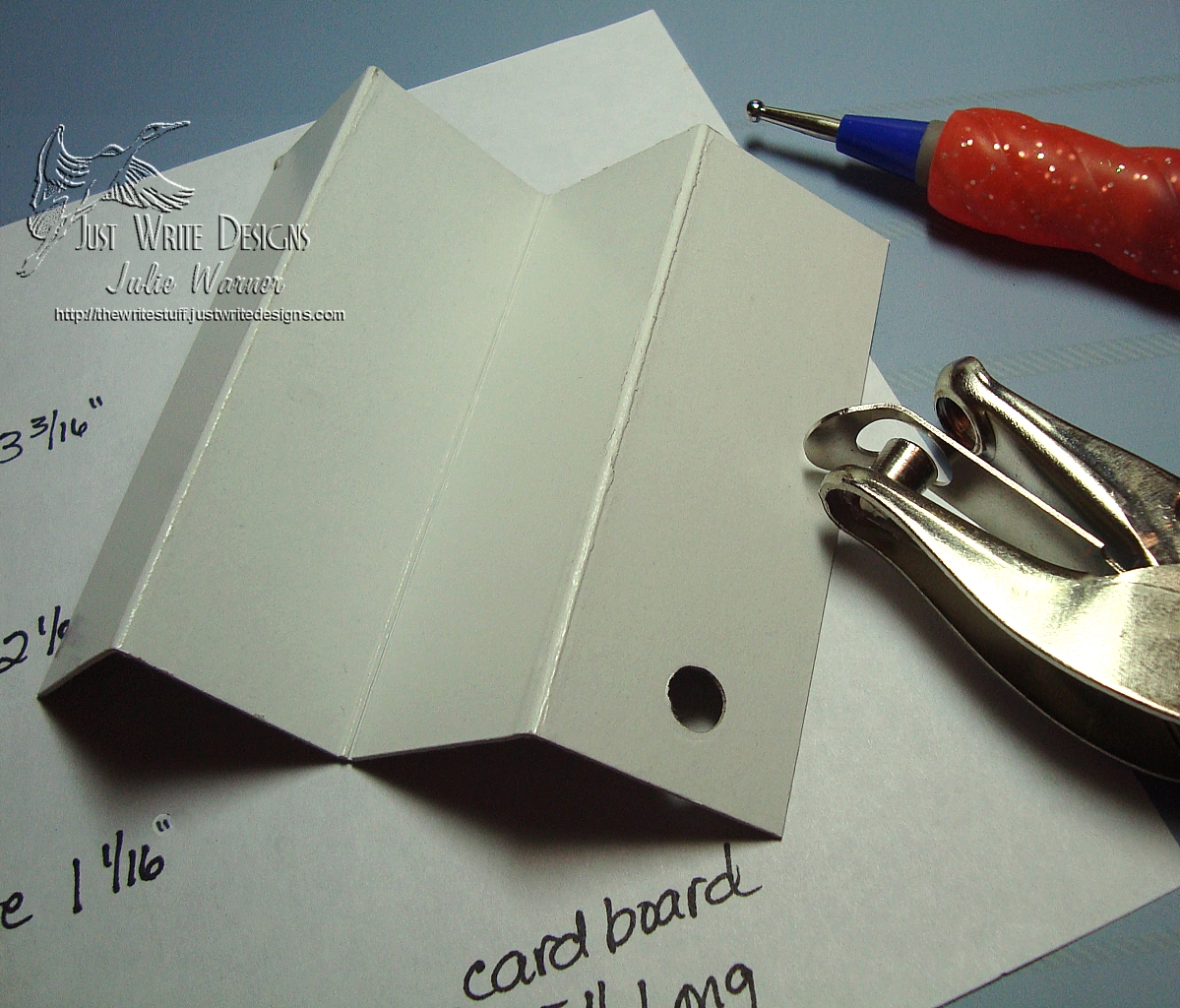
Step 2: Use the punch to create a 1/4″ hole halfway between bottom edge and first fold, as indicated.
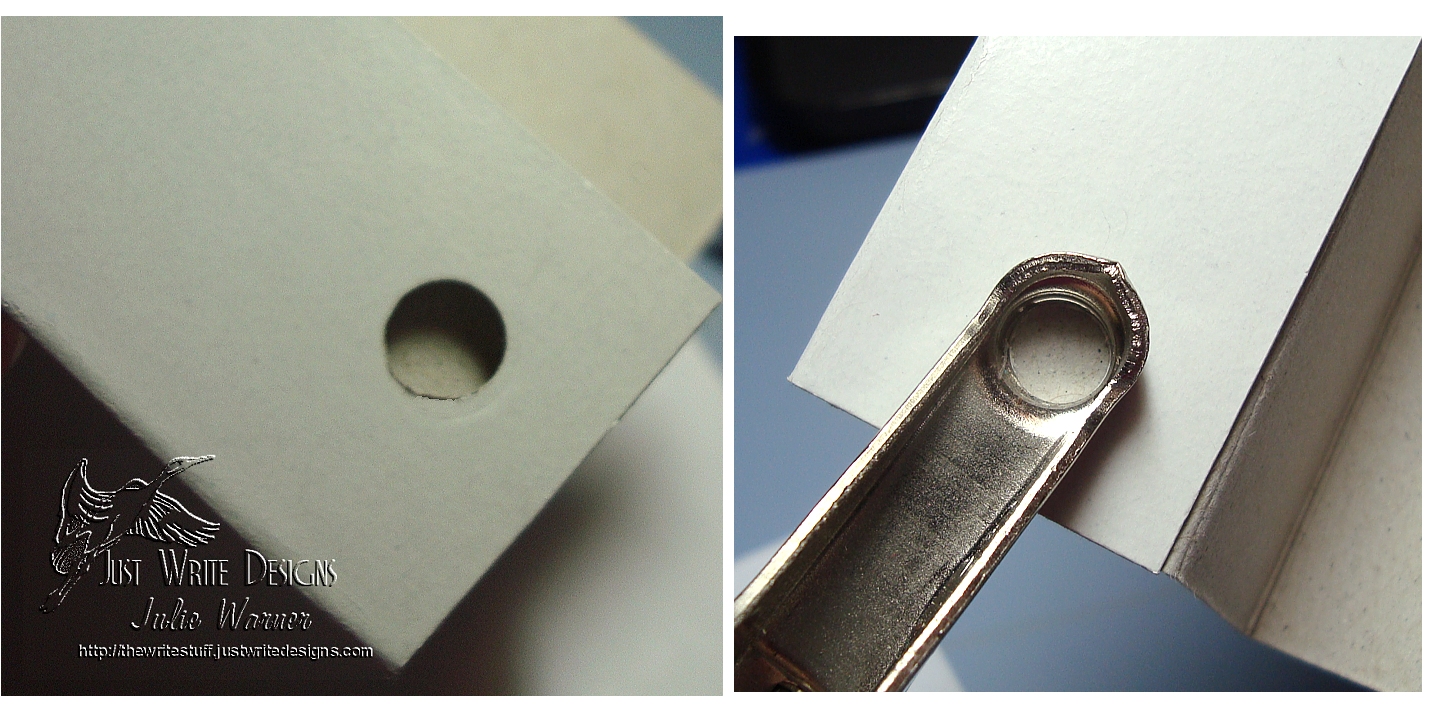
Steps 3 & 4: Fold the punched layer over the next layer. Line up your punch over the punched hole so that you punch through the next layer in the same spot. (Turn your punch over to see the hole.) Repeat this step on the 3rd layer. Leave the 4th layer unpunched. Your Faux Brad Jig should look like the first picture. If you made your jig this size, you will have room to add more sizes, if you wish.
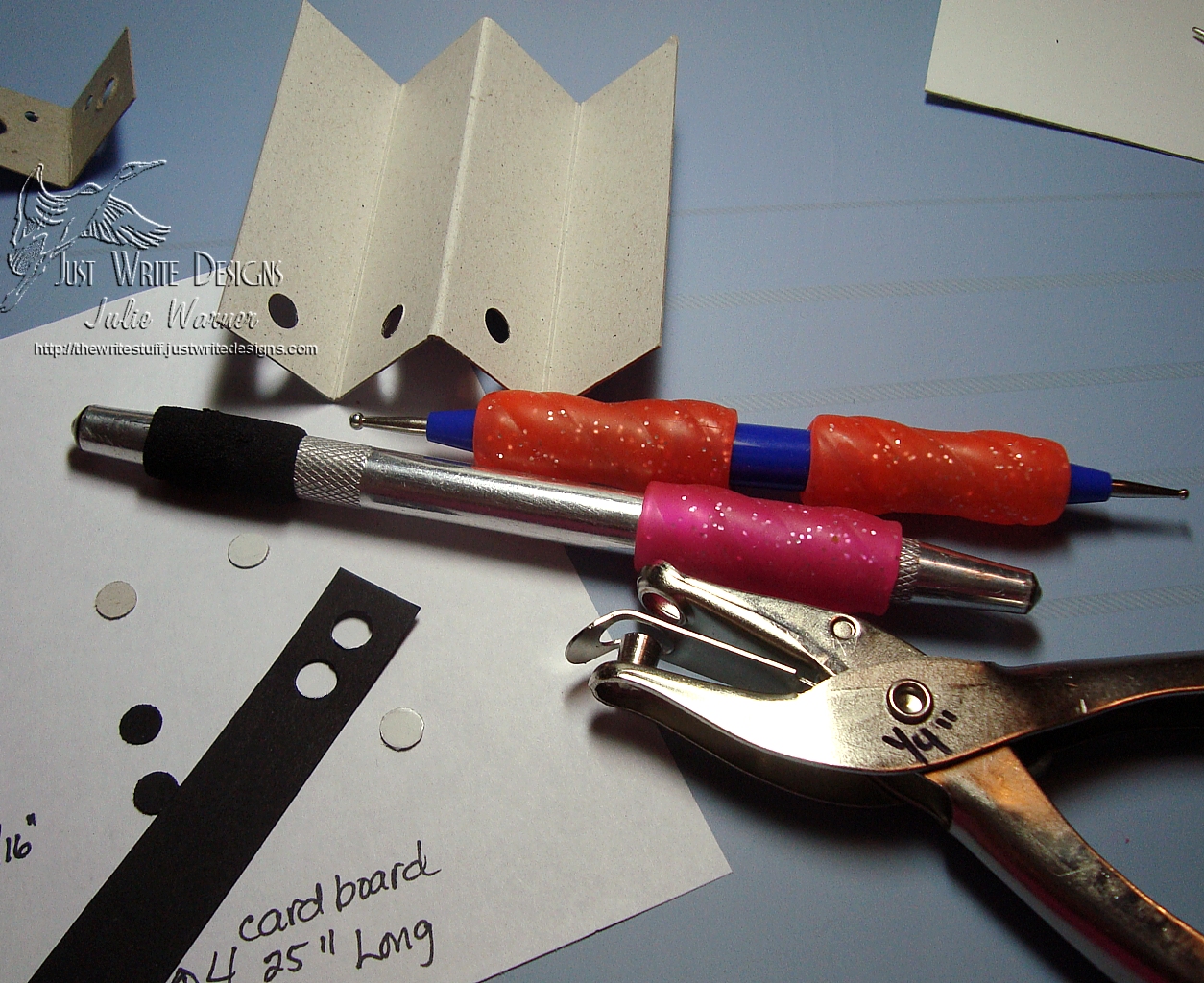
To make the Faux Brads, you’ll need your Faux Brad Jig, 1/4″ hole punch, card stock, scrap card board, glue, stylus (I use the two shown: the blue one is by Fiskars and the large rolling ball silver one says Chatterbox on the side. I put some of those squishy grips for pencils on them to make them a little more comfortable to handle.)
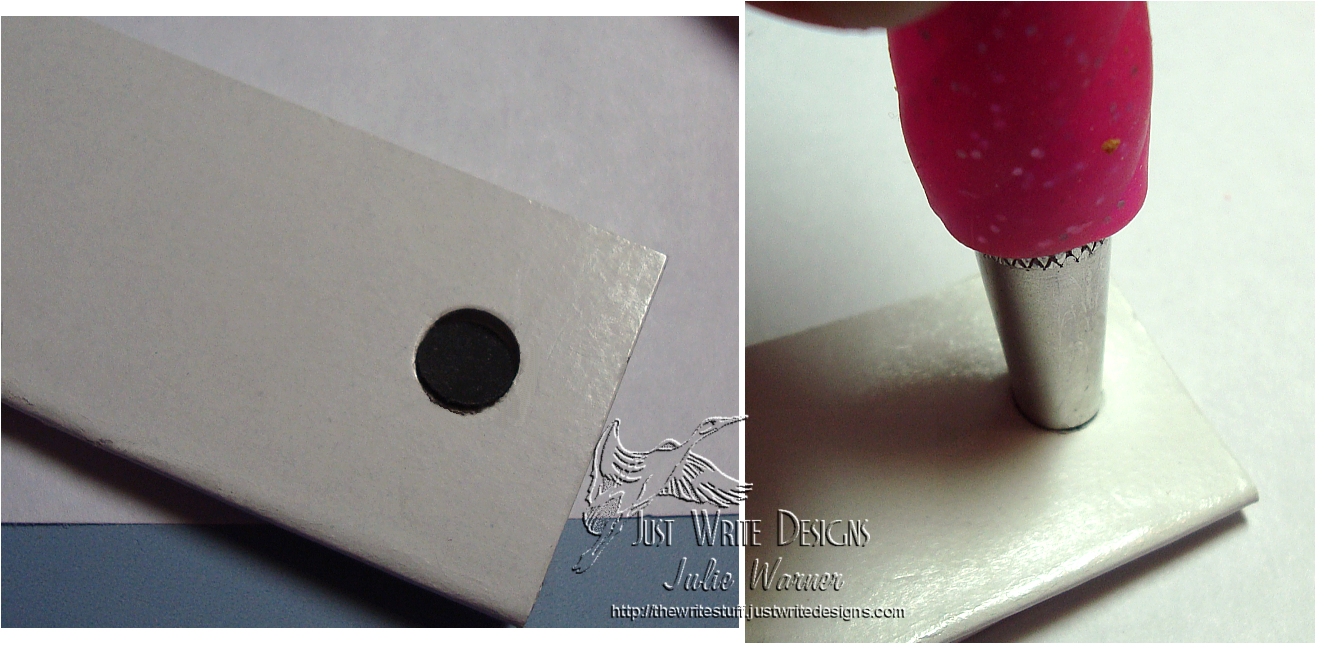
First, punch a circle out of card stock. Fold up your jig completely and place the circle inside the hole. I use the largest round end of the silver rolling ball stylus to push the circle into the three layer deep hole. This will slightly round the edges of the circle.
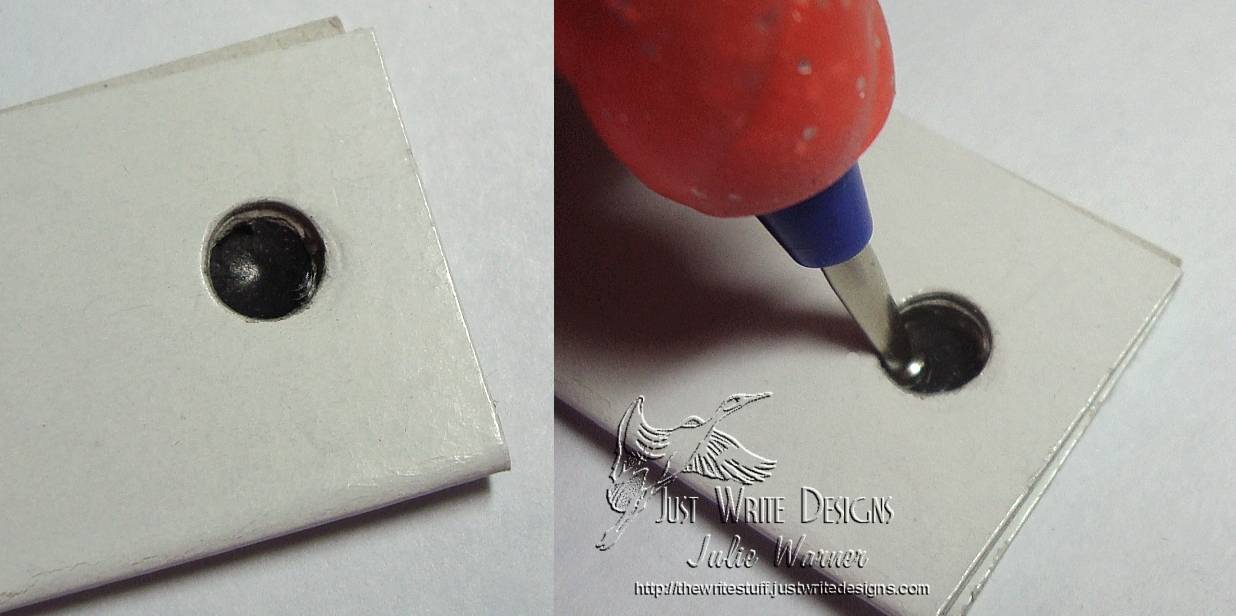
You can see in the left photo, the Faux Brad is starting to take shape. Here, I switch to the smaller stylus, but I only use the largest end. I rotate the stylus inside the Faux Brad, concentrating on pushing the edges against the sides for maximum rounding.
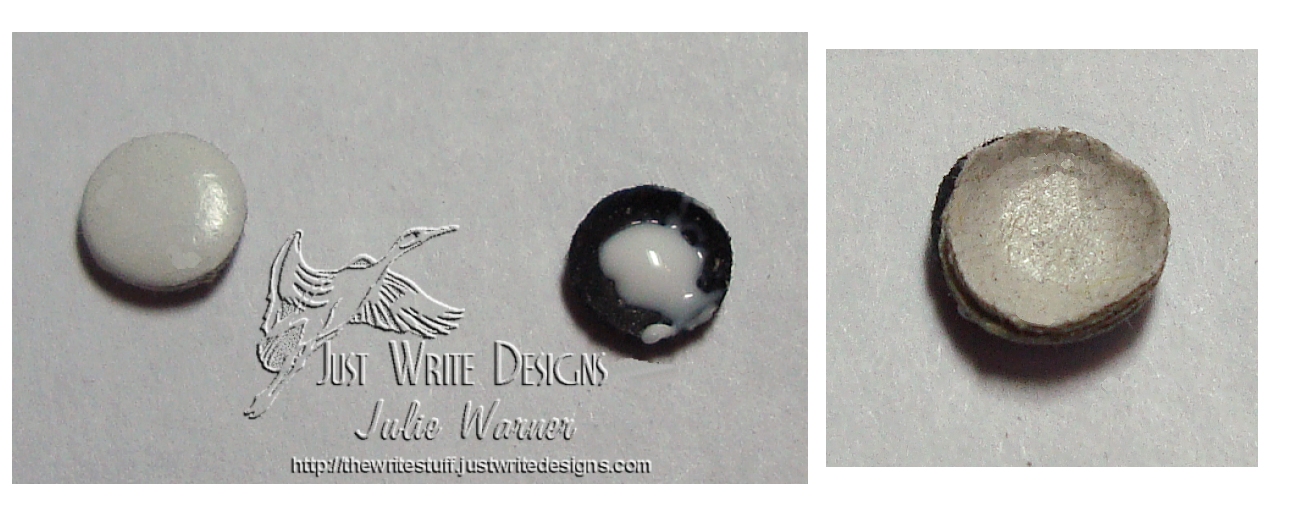
Make another brad shape out of a scrap of card board. You can use the same hole punch, but I usually use a size smaller to make sure it fits snugly inside the Faux Brad. You will need to round the card board circle before using a small amount of glue to attach it inside your Faux Brad.
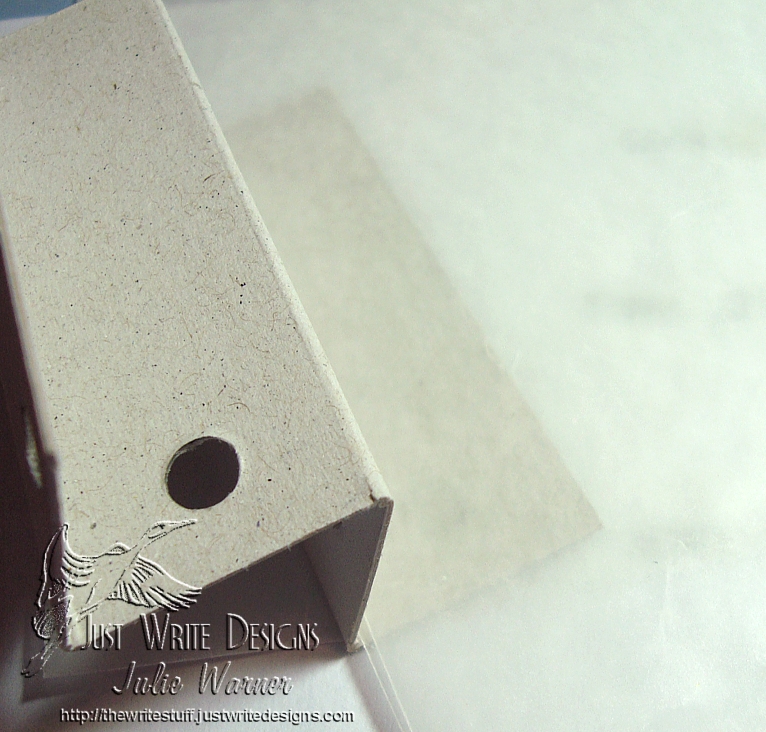
As a finishing touch, I place a piece of wax paper on the last (unpunched) fold of my Jig, place the Faux Brad back into the Jig and use the smaller stylus to ensure that the brad and the card board are firmly glued together. The wax paper keeps any excess glue from sticking to my Jig and it also adds a nice little shine to the brad by “waxing” it.
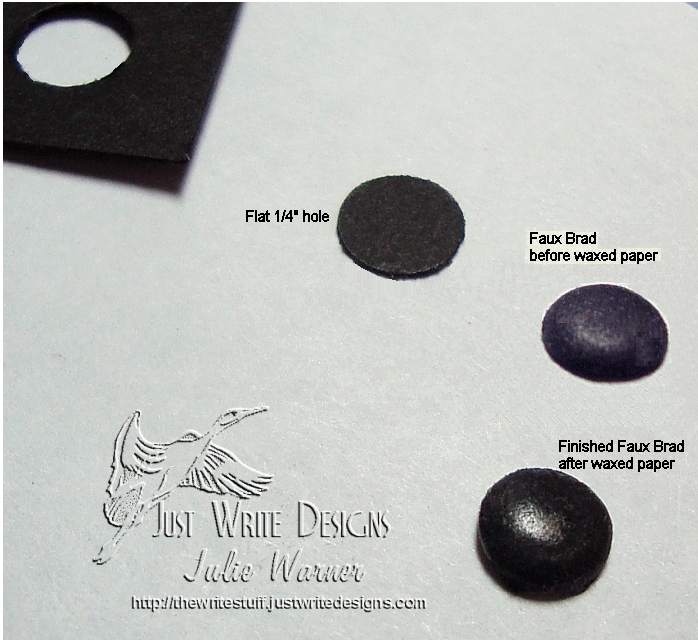
I hope you’ve enjoyed my Faux Brad Tutorial and I hope you’ll give it a try.
Thanks so much for stopping by! Your comments are always read and much appreciated!
To see examples of cards using these Faux Brads, click HERE. A list will come up and you can click on any to see the card.

